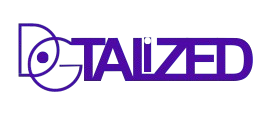The digital marketing landscape has fundamentally shifted. While marketers have spent years perfecting Google SEO, a new frontier has emerged that’s reshaping how customers discover brands. Welcome to the era of “Search Everywhere Optimization” – where your audience isn’t just searching on Google anymore.
What Is Search Everywhere Optimization?
Search Everywhere Optimization (SEO) is the strategic practice of optimizing your content for discovery across all digital platforms where users actively search for information. This includes AI chatbots like ChatGPT, social media platforms, voice assistants, and emerging AI-powered discovery tools.
Traditional SEO focused on one destination: Google’s search results. Today’s consumers search on TikTok for restaurant recommendations, ask ChatGPT for product comparisons, use voice assistants for quick answers, and discover brands through platform-specific search functions.
Why Traditional SEO Isn’t Enough Anymore
The Multi-Platform Search Reality
Recent data reveals a striking shift in search behavior:
- 40% of Gen Z users start their search on TikTok or Instagram instead of Google
- AI chatbot interactions have increased by 300% in the past year
- Voice search queries now account for 55% of teen searches
- LinkedIn’s search function drives 25% more B2B lead generation than Google for professional services
The Problem with Single-Platform Optimization
When you optimize only for Google, you’re missing massive opportunities. Your potential customers are scattered across platforms, each with unique algorithms, content preferences, and discovery mechanisms. A strategy that works perfectly for Google might completely fail on TikTok or ChatGPT.
The 7 Pillars of Search Everywhere Optimization
1. AI Platform Optimization
ChatGPT and AI Chatbots These platforms prioritize comprehensive, factual content that directly answers user questions. Your optimization strategy should include:
- Creating detailed FAQ sections that AI can easily parse
- Structuring content with clear headings and bullet points
- Including data, statistics, and authoritative sources
- Writing in a conversational, helpful tone
Optimization Tactics:
- Use natural language that mirrors how people ask questions
- Include “People Also Ask” style content sections
- Create comprehensive guides rather than surface-level content
- Ensure your website loads quickly and is mobile-optimized for AI crawlers
2. Social Platform Search Optimization
TikTok SEO TikTok’s algorithm prioritizes engagement, relevance, and trending topics. Your content strategy should focus on:
- Using trending hashtags strategically (3-5 per post)
- Creating content that encourages comments and shares
- Optimizing video descriptions with keywords
- Posting consistently during peak hours for your audience
Instagram Search Optimization Instagram’s search function combines hashtags, locations, and user behavior. Optimize by:
- Using a mix of popular and niche hashtags
- Including location tags when relevant
- Writing keyword-rich captions
- Creating searchable alt text for images
LinkedIn Search Strategy LinkedIn’s professional focus requires a different approach:
- Using industry-specific keywords in headlines and descriptions
- Creating long-form content that showcases expertise
- Engaging with comments to boost post visibility
- Building a network of connections in your target industry
3. Voice Search Optimization
Voice searches are typically longer and more conversational than text searches. Users ask complete questions rather than typing keywords.
Voice Optimization Strategies:
- Create content that answers specific questions
- Use long-tail keywords that match natural speech patterns
- Include local SEO elements for “near me” searches
- Optimize for featured snippets, which voice assistants often read aloud
4. Platform-Specific Content Formatting
Each platform has preferred content formats that perform better in search results:
Video Platforms (YouTube, TikTok):
- Create searchable titles with target keywords
- Write detailed descriptions with timestamps
- Use relevant tags and categories
- Include transcripts for accessibility and SEO
Professional Platforms (LinkedIn):
- Write compelling headlines with industry keywords
- Use bullet points and numbered lists for readability
- Include relevant hashtags (3-5 maximum)
- Add call-to-action elements
Visual Platforms (Instagram, Pinterest):
- Optimize image file names and alt text
- Use keyword-rich captions
- Create searchable board names and descriptions
- Include trending and niche hashtags
5. Cross-Platform Content Syndication
Don’t create unique content for every platform. Instead, adapt your core content for each platform’s specific requirements:
Multi-Platform Local Strategy:
- Claim and optimize profiles on all relevant platforms
- Ensure NAP (Name, Address, Phone) consistency across platforms
- Create location-specific content for each platform
- Encourage reviews and engagement on multiple platforms
- Use location-based hashtags and keywords
7. Analytics and Cross-Platform Tracking
Measuring success across multiple platforms requires a comprehensive analytics approach:
Key Metrics to Track:
- Platform-specific search rankings
- Cross-platform traffic sources
- Engagement rates by platform
- Conversion attribution across channels
- Brand mention tracking across platforms
Implementing Your Search Everywhere Strategy
Phase 1: Audit Your Current Presence (Week 1-2)
Platform Assessment:
- Identify where your target audience searches most frequently
- Analyze competitor presence across platforms
- Evaluate your current content performance on each platform
- Document gaps in your multi-platform strategy
Phase 2: Content Strategy Development (Week 3-4)
Content Planning:
- Create a master content calendar covering all platforms
- Develop platform-specific content templates
- Plan cross-platform content adaptation workflows
- Set up analytics and tracking systems
Phase 3: Implementation and Optimization (Ongoing)
Execution Strategy:
- Start with 2-3 platforms where your audience is most active
- Create and publish optimized content consistently
- Monitor performance and adjust strategies based on data
- Gradually expand to additional platforms
Advanced Search Everywhere Techniques
AI-First Content Creation
When creating content, consider how AI systems will interpret and recommend your content:
- Structure information logically with clear headings
- Include relevant data and statistics
- Write in a helpful, authoritative tone
- Create comprehensive resources rather than thin content
Cross-Platform Keyword Research
Traditional keyword research tools focus on Google. Expand your research to include:
- Platform-specific trending topics and hashtags
- Social listening for conversation themes
- Competitor analysis across multiple platforms
- User-generated content analysis for natural language patterns
Engagement-Driven Optimization
Unlike traditional SEO, search everywhere optimization heavily weighs engagement metrics:
- Create content that encourages comments and shares
- Respond promptly to comments and messages
- Build communities around your content
- Use engagement to signal relevance to platform algorithms
Measuring Success: KPIs for Search Everywhere
Primary Metrics
- Discovery Rate: How often users find you through platform searches
- Cross-Platform Traffic: Visitors coming from multiple search sources
- Engagement Quality: Meaningful interactions across platforms
- Conversion Attribution: Sales/leads traced to specific platform searches
Secondary Metrics
- Brand Mention Volume: Increase in brand discussions across platforms
- Search Share of Voice: Your visibility compared to competitors
- Platform-Specific Rankings: Position in platform search results
- Content Amplification: How often your content gets shared/saved
Common Mistakes to Avoid
1. Platform Favoritism
Don’t assume what works on one platform will work everywhere. Each platform has unique algorithms, user behaviors, and content preferences.
2. Keyword Stuffing Across Platforms
While keywords matter, forced optimization destroys user experience and platform algorithm trust.
3. Ignoring Platform Culture
Each platform has its own culture and communication style. Content that feels native performs better than obvious marketing.
4. Inconsistent Branding
Maintain consistent branding while adapting to platform requirements. Your brand should be recognizable across all platforms.
5. Neglecting Analytics
Without proper tracking, you can’t optimize your cross-platform strategy effectively.
The Future of Search Everywhere
Emerging Trends to Watch
AI Integration Expansion More platforms will integrate AI-powered search and recommendation systems. Content that performs well with current AI tools will likely succeed as these systems expand.
Voice Search Growth Voice search will continue growing, especially for local and immediate-need queries. Optimizing for conversational queries will become increasingly important.
Visual Search Evolution Platforms are improving visual search capabilities. Optimizing images, videos, and visual content for search will become crucial.
Personalization Advancement Search algorithms will become more personalized, making user engagement and relevance even more important than traditional SEO signals.
Getting Started Today
Your 30-Day Action Plan
Week 1: Research and Planning
- Identify your top 3 target platforms beyond Google
- Research competitor strategies on these platforms
- Document your current cross-platform presence
Week 2: Content Strategy
- Develop platform-specific content templates
- Create a cross-platform content calendar
- Plan your hashtag and keyword strategies for each platform
Week 3: Implementation
- Optimize existing content for your chosen platforms
- Create new content following platform best practices
- Set up analytics tracking for all platforms
Week 4: Optimization
- Analyze performance data from your first implementations
- Adjust strategies based on early results
- Plan expansion to additional platforms
Conclusion
Search Everywhere Optimization isn’t just the future of digital marketing – it’s the present reality. While your competitors focus solely on Google SEO, you can gain a significant advantage by meeting your audience where they actually search.
The key is starting with strategic planning, implementing systematically, and continuously optimizing based on data. Remember, this isn’t about abandoning traditional SEO – it’s about expanding your reach to capture the full spectrum of how people discover information today.
Your audience is searching everywhere. Make sure they find you everywhere too.
Ready to implement Search Everywhere Optimization for your business? Contact our team for a comprehensive multi-platform SEO audit and strategy development.

